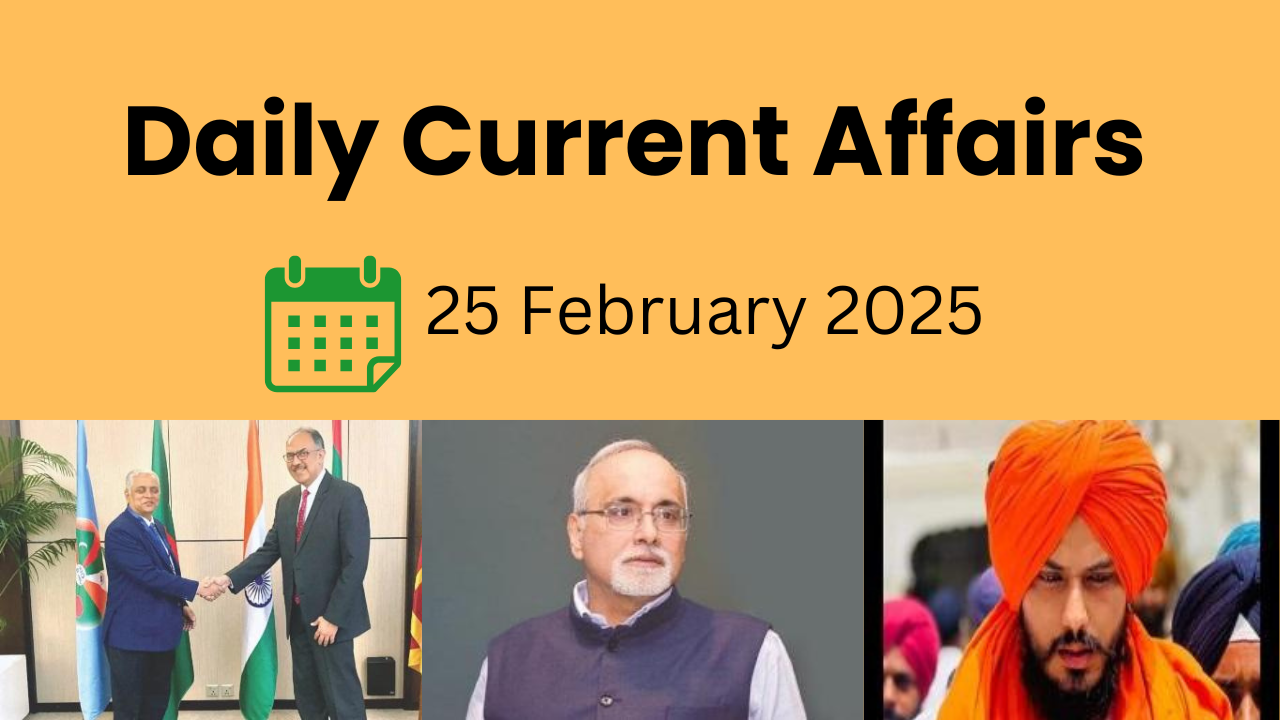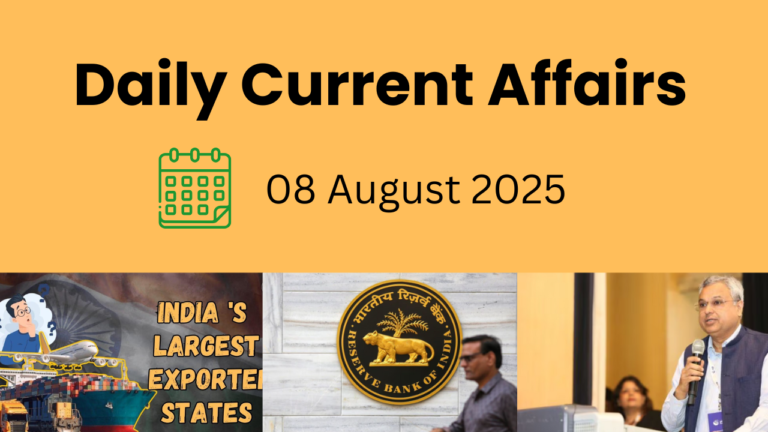1. Microsoft’s Majorana 1: A Quantum Leap in Computing with Topological Qubits
Context: Microsoft has unveiled Majorana 1, a groundbreaking quantum computing chip engineered using a new state of matter. This innovation could fast-track the development of powerful quantum computers, bringing them to industrial-scale problem-solving by 2027-2029, instead of waiting decades. However, Microsoft has yet to release any performance benchmarks for this new technology.
Microsoft’s Unique Quantum Computing Strategy:
For over two decades, Microsoft has been pioneering topological qubits, a highly stable form of qubits that require less error correction than conventional quantum bits.
What Are Topological Qubits?
- More stability: Unlike regular qubits, which are prone to errors, topological qubits store information in the arrangement and braiding of exotic particles called anyons, rather than in the particles themselves.
- Anyons are unique two-dimensional quantum particles that are neither fermions nor bosons, possessing special statistical properties.
Challenges in Developing Topological Qubits:
The journey to creating these qubits was steep, as it required the discovery of Majorana fermions, particles that are their own antiparticles—a concept first theorized over 80 years ago by Ettore Majorana.
What Are Majorana Zero Modes (MZMs)?
- Majorana zero modes are special quantum states appearing at the ends of certain topological superconductors.
- These states exist at zero energy, acting as both matter and antimatter simultaneously.
- Due to their unique properties, they are promising candidates for fault-tolerant quantum computation.
Building a New Quantum Material: Topoconductors:
To manufacture these advanced qubits, Microsoft developed topoconductors, a hybrid material combining indium arsenide (a semiconductor) and aluminum (a superconductor).
Why Are Topoconductors Important?
- Just as semiconductors enabled the rise of modern electronics, topoconductors could lay the foundation for scalable quantum systems.
- They could help scale up quantum computers to one million qubits, allowing them to tackle real-world industrial and scientific challenges.
- When cooled to near absolute zero and exposed to magnetic fields, these materials enable the creation of stable topological qubits.
Majorana 1: Microsoft’s Breakthrough Quantum Chip
Microsoft’s Majorana 1 is an eight-qubit chip, making it smaller than rivals like Google’s Willow (106 qubits) and IBM’s R2 Heron (156 qubits). However, its Topological Core Architecture holds the potential to scale quantum computers to the necessary one million qubits for solving real-world problems.
Design of Majorana 1:
- The chip features aluminum nanowires arranged in an “H” shape.
- Each “H” structure contains four controllable Majorana particles, forming a single qubit.
Potential Applications of Quantum Computing:
Microsoft envisions that Majorana 1 could drive major scientific and industrial breakthroughs, such as:
Breaking down microplastics into harmless byproducts.
Developing self-healing materials for construction, manufacturing, and healthcare.
Accelerating AI research by using quantum computing to generate synthetic data for AI model training.
Designing new materials and molecules using natural language input in AI-driven quantum simulations.
Challenges Ahead:
Despite its potential, quantum computing still faces significant hurdles:
- Environmental interference can introduce errors.
- Scaling up stable qubits remains a technological challenge.
Quantum Computers vs. Supercomputers vs. Classical Computers:
Classical Computers:
- Process information using binary code (0s and 1s).
- Use logic gates like AND, OR, and NOT to manipulate data.
Quantum Computers:
- Use qubits, which can exist in multiple states at once (superposition).
- Utilize quantum gates (like the Hadamard and Pauli gates) for computation, which are reversible in nature.
Supercomputers:
- Utilize advanced GPUs and multi-core processing to enhance calculation speeds.
- Still operate under classical computing principles.
Quantum vs. Supercomputers:
- Supercomputers only speed up classical computations, whereas quantum computers solve entirely new classes of problems that classical and supercomputers cannot.
- Quantum gates enable computing processes beyond the scope of classical logic gates.
Final Thoughts:
Microsoft’s Majorana 1 chip could be a game-changer in quantum computing, pushing the world closer to practical, large-scale quantum applications. With topological qubits showing promise in overcoming error-prone limitations, the future of quantum computing looks more transformative than ever.
2. Bay of Bengal Inter-Governmental Organisation: Strengthening Regional Fisheries Cooperation
Context: India has taken over the Chairmanship of the Bay of Bengal (BOB) Inter-Governmental Organisation from Bangladesh at the 13th Governing Council Meeting held in Malé, Maldives. This marks a significant step in fostering regional collaboration in the fisheries sector.
Understanding the Bay of Bengal Inter-Governmental Organisation:
Established in 2003, the Bay of Bengal Inter-Governmental Organisation is a regional fisheries body committed to supporting its member nations in enhancing livelihood opportunities and improving the quality of life for small-scale and artisanal fisherfolk in the Bay of Bengal region.
Historical Background:
- The organisation evolved from the Bay of Bengal Programme, initiated by the Food and Agriculture Organization (FAO) of the United Nations (UN) in 1979.
- Over the years, it has established international benchmarks in fisheries management, delivering tangible benefits to member nations.
Member Nations:
- Full Members: Bangladesh, India, Maldives, and Sri Lanka.
- Cooperating Non-Contracting Parties: Indonesia, Malaysia, Myanmar, and Thailand.
Key Objectives:
The Bay of Bengal Inter-Governmental Organisation is dedicated to promoting sustainable fisheries management and regional cooperation through:
- Raising awareness about the importance of marine fisheries management.
- Enhancing skills through training and education programs.
- Facilitating technology transfer for the growth of small-scale fisheries.
- Establishing a regional information network for effective collaboration.
- Encouraging women’s participation in the marine fisheries value chain.
Final Thoughts:
With India at the helm, the Bay of Bengal Inter-Governmental Organisation is set to strengthen regional partnerships, enhance fisheries management, and uplift coastal communities. The focus remains on sustainability, innovation, and inclusivity, ensuring a prosperous future for the Bay of Bengal’s marine ecosystem and the people who depend on it.
3. Powering a Sustainable Future: Embracing Clean Energy Solutions
Context: The widespread use of coal-based electricity generation has long been a major contributor to air pollution, posing severe threats to both human and animal health.
Recent research from the Stanford Doerr School of Sustainability highlights that nitrogen dioxide and ozone emissions from coal-fired power plants have led to a 10% reduction in wheat and rice yields in India—a loss equivalent to nearly six years of average yield growth.
The Environmental Toll of Coal-Based Power:
Coal-fired power plants have been a part of India’s energy landscape since 1920, starting with the first plant in Hyderabad under the Nizam’s rule. Today, India’s Ministry of Coal estimates that the country has enough reserves to last for the next 120 years. However, coal dependency comes at a heavy price, causing:
- Severe air pollution, leading to respiratory diseases and environmental damage.
- Reduction in agricultural productivity, impacting food security.
- Degradation of ecosystems, harming biodiversity and water resources.
Exploring Sustainable Alternatives:
1. Wind Energy – Harnessing the Power of the Wind:
- Wind turbines convert wind energy into electricity.
- India’s nine windiest states generate a total of 50 GW of wind power.
- The country ranks as the fourth-largest wind energy producer globally.
- Private sector investments play a crucial role in boosting wind power capacity.
2. Solar Energy – Capturing the Sun’s Potential:
- Solar panels absorb sunlight and transform it into electricity.
- Widely used in rooftop installations and large solar farms.
- The Central and State governments offer subsidies, making solar power more affordable and accessible.
3. Hydroelectric Power – Energy from Flowing Water:
- Dams store and control river water to generate electricity.
- These projects also help in irrigation, ensuring water availability for agriculture.
- India’s top five hydroelectric dams generate an impressive 50 GW of power.
4. Osmotic Power – The Energy of River and Sea:
- Uses the osmotic pressure difference when river water meets seawater.
- Research from the University of Sydney and Penn State confirms its feasibility.
- With a 7,500 km coastline, India has significant potential to harness osmotic energy.
5. Nuclear Power – A Reliable Energy Source:
- Nuclear reactors generate electricity through nuclear fission.
- India currently operates eight nuclear power plants, producing 3.5 GW of electricity.
- Used primarily for peaceful energy production, ensuring energy security.
Conclusion:
The transition from coal-based power to clean energy sources is crucial for reducing pollution, improving public health, and preserving the environment.
India has access to multiple sustainable alternatives, including wind, solar, hydroelectric, osmotic, and nuclear power, which can collectively meet the country’s growing energy demands. Encouraging investment and innovation in these sectors is essential to building a clean, green, and sustainable future for generations to come.
4. RBI Deputy Governor Warns Against ‘Reckless Financialization’
Context: The RBI Deputy Governor has raised concerns over the dangers of excessive financialization, cautioning that the allure of short-term gains in financial markets can often overshadow the long-term financial well-being of individuals.
What is Financialization?
Financialization refers to the growing dominance of financial markets, institutions, and instruments in both domestic and global economies. It involves a shift in investment preferences, moving away from traditional physical assets like real estate and gold toward financial assets such as mutual funds, stocks, and derivatives.
While financialization can enhance liquidity and investment opportunities, reckless financialization poses serious systemic risks, including:
- Market volatility, leading to unpredictable price swings.
- Increased debt burdens, causing a rise in default risks.
- Loss of investor confidence, which can destabilize economies.
- A potential repeat of crises like the 2008 global financial meltdown.
Key Drivers of Reckless Financialization:
- Unchecked Credit Availability: Easy access to unsecured loans and margin trading encourages excessive speculation, leading to inflated asset prices.
- Obsession with Derivatives: Complex financial instruments amplify market speculation, increasing trading risks and price instability.
- High-Frequency Trading (HFT) Boom: Algorithmic trading accelerates market fluctuations, sometimes beyond rational economic levels.
- Lack of Financial Literacy: Many retail investors enter the market without a solid understanding of risks, leading to uninformed decisions.
- Focus on Short-Term Profits: The pursuit of quick financial gains often overshadows long-term financial planning, leading to reckless investment choices.
- Technology-Driven Risks: AI-powered trading systems make investment decisions without transparency, increasing systemic vulnerabilities.
- Influence of Social Media and Herd Mentality: Retail investors, influenced by peer pressure and online trends, often engage in high-risk speculative trading without proper analysis.
Final Thoughts:
While financialization has revolutionized the investment landscape, its unregulated growth can destabilize markets and jeopardize individual financial security. Investors must prioritize informed decision-making, while regulators must ensure responsible financial innovation to prevent potential crises. A balanced approach is essential—where financial markets drive economic progress without compromising stability.
5. Dinesh Khara Committee: Reforming India’s Insurance Sector
Context: The Dinesh Khara Committee is a high-powered panel established by the Insurance Regulatory and Development Authority of India (IRDAI) to review the Insurance Act, 1938 and propose necessary amendments.
Objectives of the Committee:
- Modernizing Insurance Laws: Ensuring the Act meets the evolving needs of the insurance industry.
- Enhancing Investment Opportunities: Encouraging foreign investment to boost sector growth.
- Strengthening Insurance Penetration: Making insurance more accessible and efficient.
- Aligning with Global Standards: Updating regulations to match modern economic and regulatory requirements.
Key Members of the Committee:
The seven-member expert panel is led by Dinesh Khara, the former Chairman of the State Bank of India (SBI). Other prominent members include:
- NS Kannan – Former MD & CEO of ICICI Prudential Life Insurance.
- Girish Radhakrishnan – Former CMD of United India Insurance.
- Rakesh Joshi – Former Member of IRDAI.
- Saurabh Sinha – Former Executive Director of RBI.
- Alok Misra – MD & CEO of MFIN (Microfinance Institutions Network).
- L Vishwanathan – Legal Expert specializing in financial regulations.
Key Recommendations of the Committee:
- Raising the Foreign Direct Investment (FDI) Limit: Proposes allowing 100% FDI in the insurance sector, attracting more global players and enhancing competition.
- Introduction of Composite Licences: Recommends enabling insurers to operate across multiple insurance categories under a single licence, streamlining operations.
- Flexible Capital Requirements: Suggests introducing differential capital norms, where capital requirements vary based on business size and risk exposure.
- Revising Solvency Regulations: Advocates relaxing solvency margin requirements to improve financial efficiency while maintaining industry stability.
- Captive Insurance Licences: Proposes granting captive licences, allowing businesses to self-insure their risks, reducing dependency on traditional insurers.
- Overhauling Investment Regulations: Calls for a review of investment policies, simplifying foreign insurer investment and repatriation procedures.
- One-Time Registration for Intermediaries: Suggests simplifying the registration process for insurance brokers and intermediaries, reducing regulatory burdens.
- Expansion of Financial Services: Recommends allowing insurers to distribute other financial products, improving market integration.
Conclusion: The Dinesh Khara Committee is set to play a transformative role in shaping India’s insurance landscape. By introducing progressive reforms, the committee aims to create a more inclusive, competitive, and investment-friendly insurance sector, aligning it with global best practices.
6. Article 101(4) of the Indian Constitution: Ensuring Parliamentary Accountability
Context: Amritpal Singh, currently detained under the National Security Act (NSA), has petitioned the Punjab and Haryana High Court seeking permission to attend the ongoing Parliament session. His request stems from concerns over possible disqualification under Article 101(4) of the Indian Constitution due to prolonged absence from the Lok Sabha.
Understanding Article 101(4) of the Indian Constitution:
Article 101(4) outlines the conditions under which a Member of Parliament (MP) may lose their seat due to continued absence from legislative proceedings.
Key Provisions of Article 101(4):
- If an MP is absent from the House for 60 consecutive days without approval, their seat may be declared vacant.
- The counting of days excludes periods when Parliament is not in session.
- The decision regarding disqualification is made by the Speaker (Lok Sabha) or Chairman (Rajya Sabha).
Why is Article 101(4) Important?
This provision plays a crucial role in maintaining parliamentary discipline and ensuring that elected representatives actively participate in legislative functions.
Objectives of Article 101(4):
- Encourages MPs to fulfill their legislative duties.
- Prevents neglect of parliamentary responsibilities.
- Strengthens democratic accountability and representation.
Exceptions and Special Considerations:
Leave of Absence for Valid Reasons:
MPs can request permission for absence due to illness, legal detention, or unavoidable circumstances. If granted, they retain their seat despite their absence.
Judicial Intervention in Special Cases:
In situations where an MP is detained, the courts may step in to facilitate attendance if deemed necessary, balancing legal proceedings with parliamentary rights.
Final Thoughts:
Article 101(4) upholds the integrity of parliamentary democracy by ensuring that elected leaders remain actively engaged in governance. However, it also provides flexibility for legitimate absences, ensuring a fair and balanced approach to parliamentary participation.




